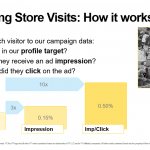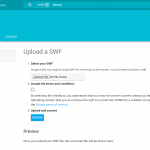The disruption of attribution is coming
Assigning credit for the marketing effort leading to a sale is about to face a trio of forbidding challenges.

Attribution, hold onto your metaphorical hat.
For years, the art of determining which marketing effort led to a sale has been performed inside a black box that may have contained as much magic as science.
Marketers have had the unenviable task of finding out, for instance, what impacted all those people to buy those blue sneakers online and in physical stores during two weeks in May in Boston.
There have been two main approaches. The venerable approach of marketing (or media) modeling mix (MMM) is top-down, with a focus on overall budget spend versus sales that also includes large factors like weather. Born before there was a World Wide Web, it’s largely offline-focused and has long time horizons.
The other is digital attribution, based on all those trackable online actions like clicks. Early attribution schemes like first- or last-touch — where the credit for a sale goes to the first or the last touch point — have largely given way in the age of multichannel marketing to multitouch attribution (MTA).
In MTA, fractional credit is assigned to multiple touch points — that is, multiple ads in various channels — based on which model works best to explain the outcome. If you want to test whether a given factor like search ads is assigned the most appropriate fractional credit, Conversion Logic CEO Brian Baumgart told me, just remove it or change the credit value, and see if the model still accounts for what happened.
Since attribution is a fluid and complex assignment, there are variations.
For example, Jerrelle Gainey, VP and CTO of direct response agency BKV in Atlanta, recently described to me how machine learning algorithms can be static, with credit assigned to touch points, or causal, where credit is derived by machine learning from commonalties in similar campaigns.
‘Many ways to same sale’
Static approaches are “always accurate,” he said, because the marketer is assigning the value — a kind of “self-fulfilling prophecy,” while machine-learning causal approaches can be more predictive.
Firms often combine their approaches to find the right blend. Conversion Logic, for instance, marries MMM with digital attribution, while BKV blends static and causal techniques.
Blends are useful, because attributing credit for the sale is getting more and more complex.
“The path to conversion has gotten so fragmented,” Baumgart said, because “there are many ways to the same sale.”
And signs are that everything so far has just been the warm-up.
The fragmentation of the media and commerce landscape is about to explode in ways that will make our current environment look as ordered as a bowling alley.
In particular, there are three factors at play now that are suiting up to wreak havoc on current models and blends of MMM and digital attribution.
Namely: data restrictions, device explosion and intelligent agents.
Attribution, a brave soul
The upcoming General Data Protection Regulation (GDPR) from the European Union is the leading example of the first factor, since its restrictions on consumer data would seem to wreck the ability to attribute sales based on clicks. It may or may not affect consumer data in the US and other non-EU countries, but it almost certainly will in that part of the world.
Plus, the current and coming browser restrictions on first- and third-party cookies by Apple and Google mean that user activity tracking will have big holes in the data.
Then there’s the internet-ization of everything. It seems like a dream come true for many marketers, where sensors, connectivity, displays and natural interactions like touch, gesture and speech are populating an endless variety of devices and objects.
But the flip side is that, if this arc continues, potential customers will receive message inputs from a huge number of additional sources: interactive billboards and bus displays, product packaging that communicates with you, augmented reality glasses that show messaging overlays on anything it can, to name a few.
It won’t be a fragmentation of message delivery. It will be an atomization.
Perhaps there are ways to algorithmically account for much less data and many more channels. But then there are the agents.
It’s not just that the intelligent agents from Amazon, Apple, Google, Microsoft, Samsung and others are becoming a major clickless interface for the web and many back-end services. It’s that consumers will likely have their own personal, intelligent agents finding the best deals for them.
How does machine learning attribute a sale when the discovery and purchase was made by an algorithm?
Attribution is a brave soul who came up with ingenious new solutions as the world of commerce turned to online. But it remains to be seen what it will be able to do as marketing reinvents consumer data, withstands an explosion of device channels and rebalances for shopping by agents.
Marketing Land – Internet Marketing News, Strategies & Tips
(25)














